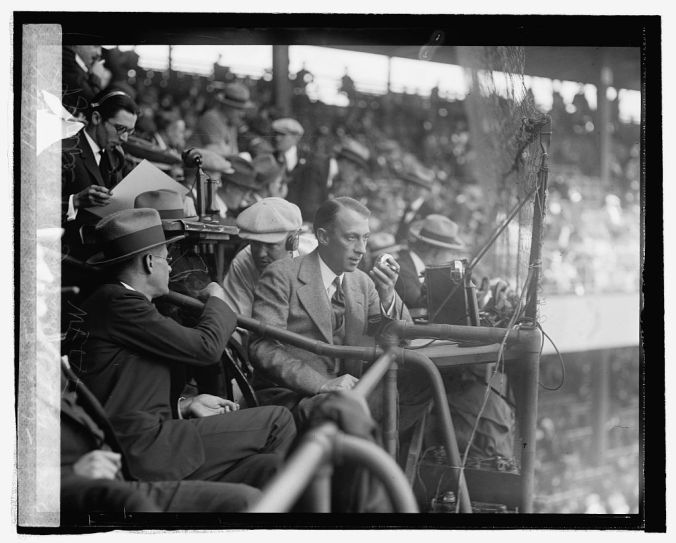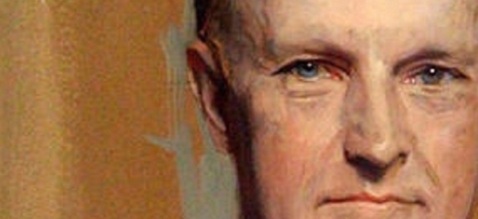
Graham McNamee covering the World Series, October 5, 1924. Photo credit: Library of Congress.
Before Walter Cronkite there was Edward R. Murrow. Before Murrow, however, there were the legends who created radio newscasting during the 1920s: Graham McNamee, Floyd Gibbons, Lowell Thomas and Hans von Kaltenborn.
McNamee of WEAF was especially instrumental in those early days of radio coverage for both Presidents Harding and Coolidge. He covered Coolidge’s first, and arguably, his most important Annual Message to Congress in December 1923. McNamee was there for the growing number of speeches that would be delivered by “Silent Cal” as America’s First Radio President. Coolidge reveled in the use of this medium at a time when ‘real’ news reporting was jealously guarded by newsprint editors and correspondents. It was feared radio would kill print. Television, with just the faintest of pictures at the close of the decade, would later challenge radio as it would continue challenging print.

President Coolidge delivering his first Annual Message before both houses of Congress, December 6, 1923. Covered by Graham McNamee on WEAF, McNamee took the unprecedented initiative of summarizing the basic points of the President’s message following its completion for listeners tuning in late. The summary was praised by listeners at the time as a helpful innovation but was nixed in the future for sounding too close to news reporting, the exclusive jurisdiction of print media at that early date. Photo credit: Library of Congress.
Just a week after the broadcast of President Coolidge’s speech, Cal was giving another with McNamee and the technical team of WEAF setting up from directly inside the White House. McNamee, interacting with them both on many occasions, had this to say three years later about the President and his lovely lady, Grace:
“Before the start, Mrs. Coolidge watched our movements with intense interest, asking in her sweet, gracious way many questions about the apparatus and its working. Characteristically enough, the President himself put no questions to us. I have observed him closely on many occasions and rarely indeed have I heard him ask any. He seems to take everything in with his eyes. This very day I watched him as he stood with [GOP Chairman William M.] Butler and other prominent people, having innumerable queries shot at him, but seldom did he speak himself, just stood there, listening, thinking, absorbing. I could not help but wonder at his poise and calm, and the wise shrewdness of those eyes which, you can depend upon it, were all the time taking in something” (You’re On the Air [1926], 70).
It reminds us of that old rhyme which hung in the Coolidge family home:

Another intriguing story, Daniel. Jerry Wallace indicated Mr. Coolidge was given some technical instruction to maximize his radio communications skills. Have you learned when, where, and who may have provided this training?
Keep Cool!
It appears that H. M. Craven, Supervisor of Broadcasting and experienced engineer of station WCAP in Washington, personally trained Cal in “microphone manners” while still a Vice President. As for the exact occasion(s) or place, that is tougher to pin down. As scholar Mr. Wallace has noted, by the time Coolidge delivered his first radio message as President in December 1923, he had already become familiar with the medium out of the 1922 campaigns, an observation Graham McNamee hints at in his book. Great question…thanks for asking it!